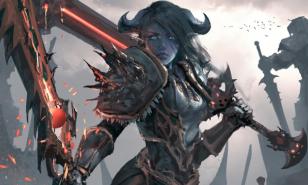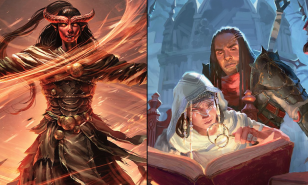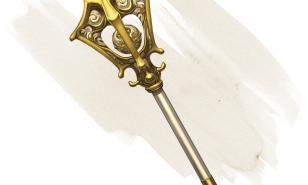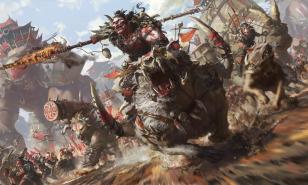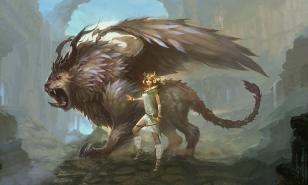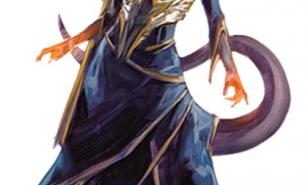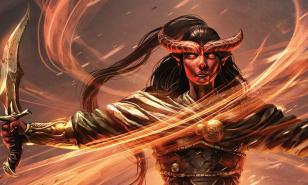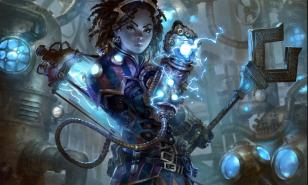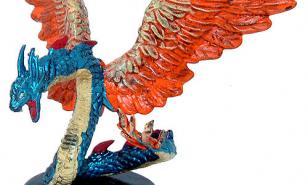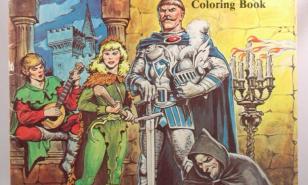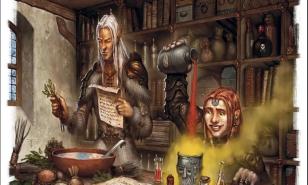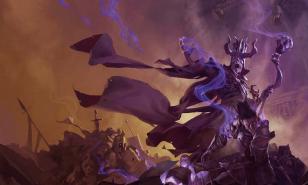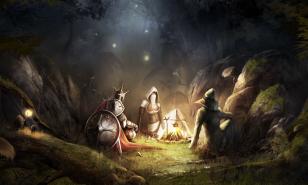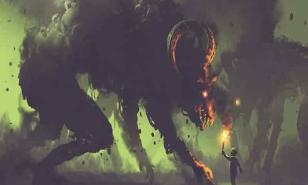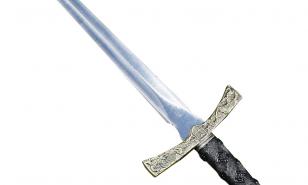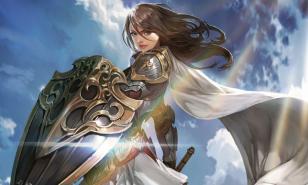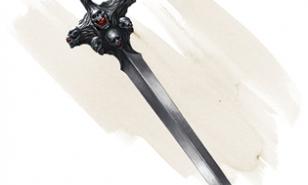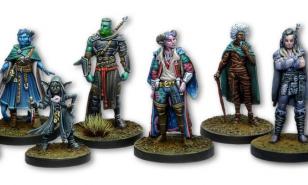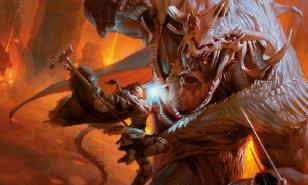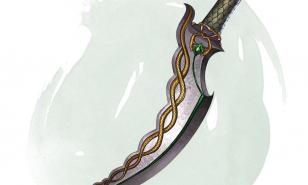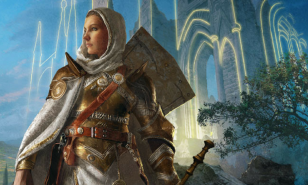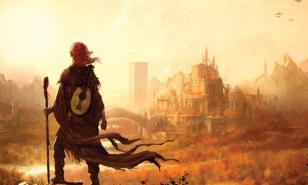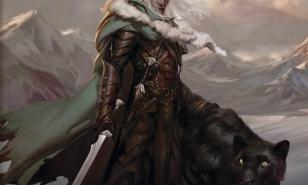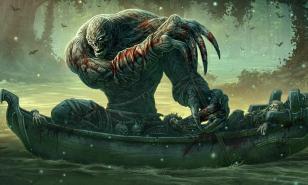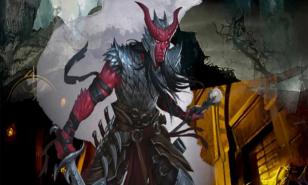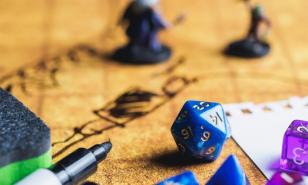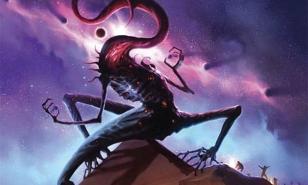[Top 15] Most Powerful D&D Monsters
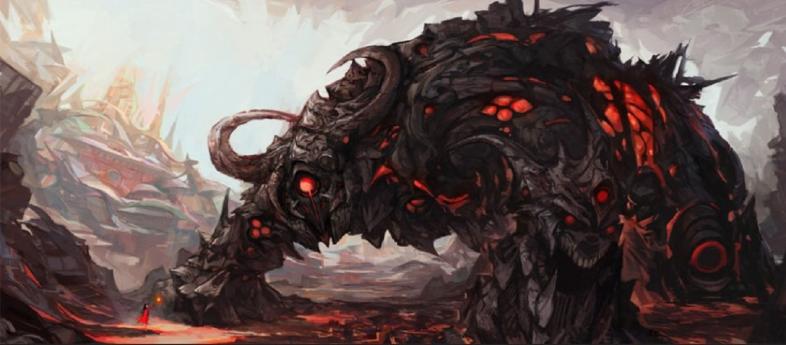
D&D transports its players into other worlds. There, players can be anything and anyone they want. D&D frees a person from restrictions put on them in this world. Players have to fight for that freedom, however, and some of the things that have to be fought are terrifying. Here is a list of the 15 most powerful D&D monsters, ranked by their dangerousness and versatility.
15. Mimic

Think something's safe? Think again.
Ah, the mimic. These don’t seem so powerful upon first glance, but they can be lethal. Mimics are monsters that disguise themselves as inanimate objects. There are friendly mimics that help players, but there are mimics that do all manners of evil, from taking tolls to luring players to their deaths.
Often, mimics will disguise themselves as chests, but they do not always do so. They wouldn’t be so dangerous if a player were prepared to fight them, but the element of surprise is what makes a mimic dangerous. What’s more terrifying than being attacked by something that appeared to be totally innocent?
Imagine: a player reaches for a treasure chest – guard down, because, why worry about a chest? Then, as the player tries to pick up one of the many gems inside the chest, it chomps down on their arm.
What makes them dangerous?
- Surprise - use the element of surprise to lure unsuspecting players to them
- Disguise – Mimics are masters at disguising themselves. They can even change their insides to look a certain way. In the case of a treasure chest, the mimic alters their insides to look like coins and jewels.
- Sticky – When disguised as an object, mimics can stick to anything they come into contact with. If a player touches the mimic, the player sticks to it and has disadvantage when rolling to get away
- Stealthy – can look so much like any other object that there is no way to tell that something is lurking… until it’s too late
- Acid Immunity – because a mimic’s mouth secretes acid
Stats
- Natural AC of 12
- Has 58 HP
- Challenge level: 2
- Medium Monstrosity
- Weaknesses
- Strength – Surprise is the mimic’s most effective way to attack; they’re not very strong on their own. If a player knows a mimic is around, there is little the mimic can do.
- Range – Mimics excel at close-range attacks. If a player keeps their distance, a mimic cannot attack. Attacks from a mimic can only reach 5 ft.
- Single-target attacks – A mimic can only attack one target at a time. Their abilities aren’t suited to take on a group.
14. Iron Golem
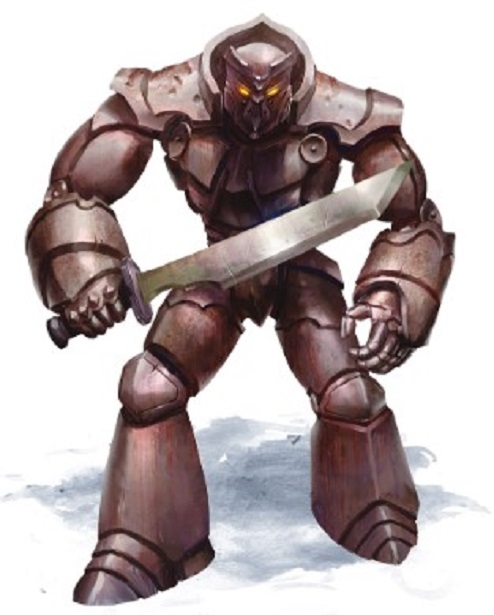
It's the big brother you never wanted.
Now, on to an even more powerful monster – the iron golem. Iron golems are constructs made by a creator and are meant for fighting. They are naturally strong, and their iron bodies make them immune to many attacks.
What makes them dangerous?
- Immunity – Iron golems are constructs made by a creator. They’re not living beings and are immune to almost every type of attack, physical and magical
- Fire Absorption – unharmed by fire and regain HP from it
- Poisonous Breath – exhale poison and can harm anything in a 15-ft cone
Stats
- Natural AC of 20
- Has 210 HP
- Challenge level: 16
- Large Construct
- Weaknesses
- Range – cannot attack targets more than 15-ft away from them
- Smartness – They are dumb, to put it plainly. Iron golems are not smart, and even have a -4 modifier for intelligence rolls
13. Mummy Lord
Not just a mummy - ruler of all mummies.
Mummy lords are the worst kind of sketchy lawyers. Being lawful, they won’t break laws to get what they want, but they’re masters of finding loopholes in the law.
They also have the annoying trait of being able to come back. If their heart isn’t harmed in an attack (perhaps they store it somewhere for safekeeping), then their body can regenerate even after it’s been destroyed.
What makes them dangerous?
- Magical Resistance – A mummy lord has advantage on saving throws against magic
- Spellcasting – Mummy lords can cast spells on opponents
- Rejuvenation – As long as the heart is intact, a mummy lord will continue to come back to life
- Mummy rot – This mummy has an attack that can curse a player to lose 10 HP every day until the curse is removed or the players HP drops to 0, and they turn to dust
- Legendary actions – These monsters have 5 legendary actions that they can choose to use.
- Immunity – Since they are already dead, mummy lords are immune to several types of damage, including: necrotic, bludgeoning, and piercing. They also can’t become exhausted, poisoned, or paralyzed.
Stats
- Natural AC of 17
- Has 97 HP
- Challenge level: 15
- Medium Undead
- Weaknesses
- Lawful – Mummy lords are evil, but they won’t break laws to commit those evils
- Fire – Being dead, they are naturally quite dry and highly flammable
12. Marilith
Imagine fighting a spider that can wield swords.
Mariliths are a type of demon. They have a humanoid upper body that can speak Abbysal, and their lower body is reptilian, and they can attack with their tail.
They can also teleport, which makes them terribly difficult to fight. It’s hard to back them into a corner if they can teleport across the room.
What makes them dangerous?
- Magical Resistance – advantage on saving throws against magic
- Reactive – reaction for every action during a battle
- Multiattack – can make a devastating seven attacks at once!
- Immunity – immune to several types of physical conditions and attacks, including: cold, fire, lightning, bludgeoning, and piercing
- Teleport – can teleport to any space up to 120-ft away
Stats
- Natural AC of 18
- Has 189 HP
- Challenge level: 16
- Large Fiend
- Weaknesses
- The marilith has no weaknesses, per sé, but they’re an upper-middle-of-the-road monster. They’re not weak, but they also aren’t all-powerful.
11. Vampires
I vant to suck your blood.
We have all heard of vampires, and the vampires of D&D function almost exactly like traditional vampires IRL. These vampires are harmed by sunlight and running water, must be invited to enter a building, and can transform shape.
What makes them dangerous?
- Transform – can change into a small bat or a medium cloud of mist
- Legendary Actions – can choose from several legendary actions in addition to their regular actions
- Lair Actions – The vampire will attack, and so will their home.
- Rejuvenation – regains 20 HP per turn
- Legendary Resistance – can choose to succeed 3 times even if they fail a saving throw
- Physical Resistance – advantage on saving throws against several types of damage
- Children of the Night – can call swarms of bats, rats, or wolves to their aid once per day
- Spider Climb – can climb on surfaces (even upside down) with no problem
Stats
- Natural AC of 16
- Has 144 HP
- Challenge level: 13
- Medium Undead
- Weaknesses
- Sunlight – sunlight does radiant damage
- Running water – running water does acid damage (Vampires can’t take a shower)
- Forbiddance – must be invited to enter a building
- Stake to the heart – paralyzed by a piercing, wooden weapon impaling the heart
10. Lich
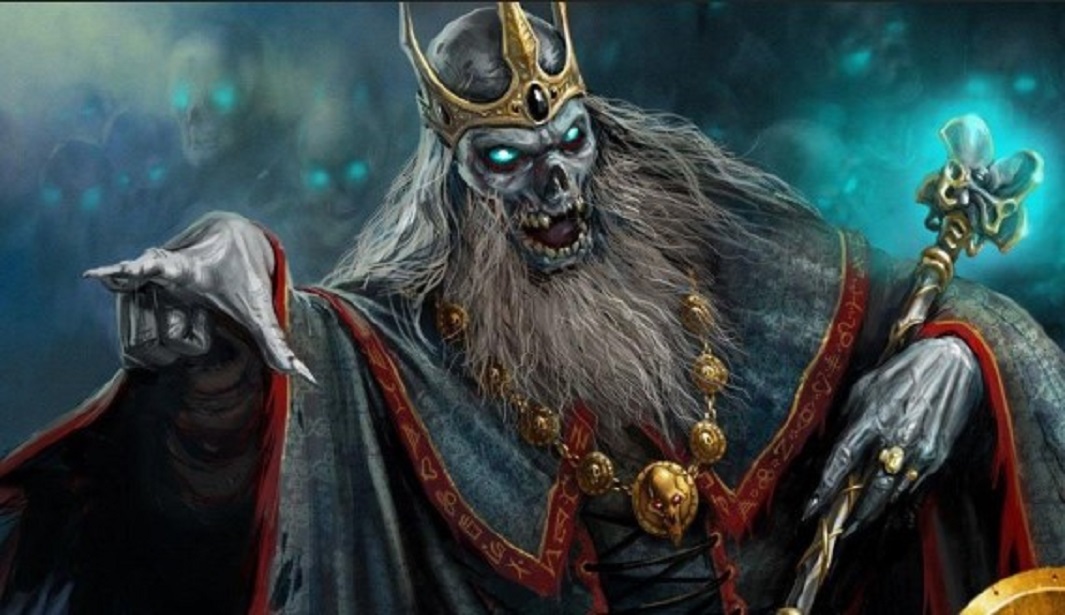
The dead isn't dead anymore.
A lich is an undead sorcerer. This type of monster is quite powerful due to their sheer amount of intelligence and spellcasting abilities.
Like mummy lords, liches can also keep coming back to life once they have been killed, but liches do not have to have an intact heart to do so.
What makes them dangerous?
- Legendary Resistance – can choose to remain unharmed from an attack up to 3 times even if they fail a saving throw
- Legendary Actions – can perform several legendary actions
- Lair Actions
- Spellcasting – can cast spells upon their opponents; a lich is an undead wizard, so it is good at spellcasting
- Rejuvenation – even after death, they can get a new body and come back to life (with this definition, Voldemort was a lich)
Stats
- Natural AC of 17
- Has 135 HP
- Challenge level: 21
- Medium Undead
- Weaknesses
- Strength – Liches have plenty of mental strength, but not much physical strength. If a D&D player were able to get close enough, a lich could be physically overpowered fairly easily
9. Planetar
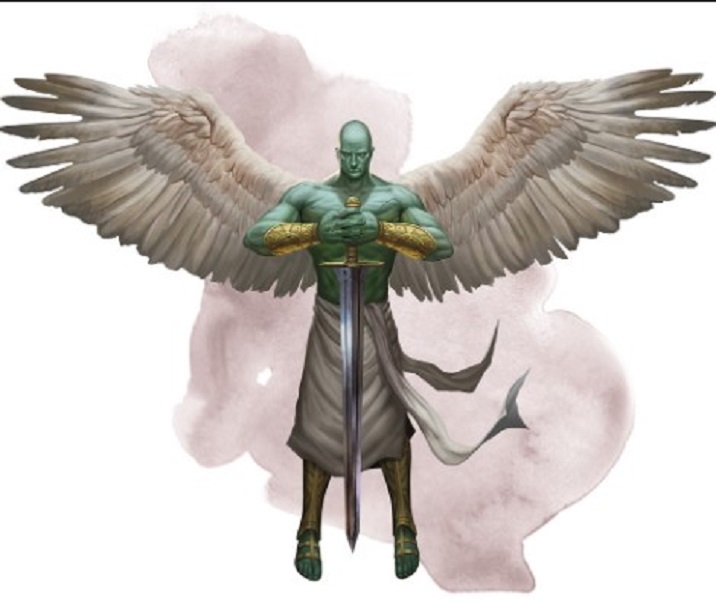
They'll atack with the power of the gods.
Planetars are lawful good creatures. They won’t attack if a player has good intentions but watch out if the intentions are evil.
They are a form of celestial being and know when they’re being lied to. A planetar will fight a player if their intentions aren’t pure, and they can deal a lot of radiant damage.
What makes them dangerous?
- Magical Resistance – advantage on all saving throws against magical attacks
- Damage Resistance – advantage on saving throws against many kinds of physical attacks
- Innate Spellcasting – ability to cast spells upon an opponent, but the spells works more like cantrips, and some can be used limitlessly
- Awareness – know when they’re being lied to and have truesight; it’s hard to fool a planetar
Stats
- Natural AC of 19
- Has 200 HP
- Challenge level: 16
- Large Celestial
- Weaknesses
- Darkness – do not have the ability to see in the dark
- Lawful
8. Pit Fiend
This is like a bigger, badder, trop-door spider.
These are also beings intertwined with fate, but they are on the opposite side of the scale from planetars. Pit Fiends are demons, and they are completely evil. If a player gets into a fight with a pit fiend, it will basically smother the player with attacks, and then it might poison the player.
What makes them dangerous?
- Resistance – resistant to all physical attacks not performed by a silver weapon
- Magic Resistance – advantage on saving throws against magical attacks
- Spellcasting – can cast spells, but the spells work more like cantrips, and pit fiends can use them at will, some of these spells are limited and can only be used 3 times, but others are not and can be used as many times as desired
- Multiattack – can attack with their tail, claw, mace, and bite at once
- Poison – a player must make a saving throw after a bite or become poisoned
Stats
- Natural AC of 19
- Has 300 HP
- Challenge level: 20
- Large Fiend
- Weaknesses
- Range – physical attacks can only be performed at close range, and they only have one magical attack that does damage at any distance
7. Androsphinx
The kitty has claws.
Here is a monster popular in mythology. However, in mythology, sphinxes usually just ask riddles, but in D&D, they attack players. Forget blocking a road and peaceably asking questions.
What makes them dangerous?
- Inscrutable – immune to any attempts to reading their thoughts
- It’s a lion with wings – lions are dangerous IRL, but this one can fly
- Spellcasting – ability to cast spells against opponents
- Legendary Actions – have multiple actions to choose from and use
- Teleportation – can teleport up to 120 ft away
Stats
- Natural AC of 17
- Has 199 HP
- Challenge level: 17
- Large Monstrosity
- Weaknesses
- Lawful
6. Balor
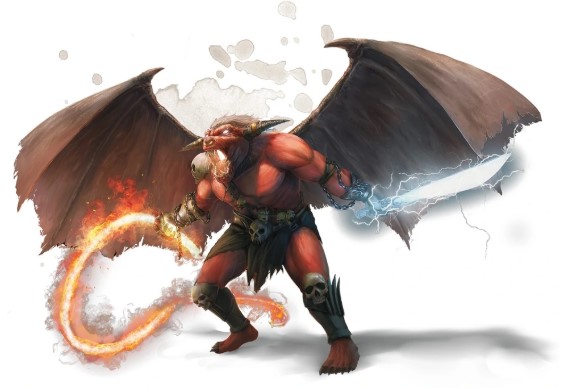
Not just the college.
Balors are heavy hitters in an attack. They are demons, like pit fiends, but more powerful. They are strong to begin with and have an aura of fire on top of that. A balor is like a red, hot fire poker, and a player can’t get close without being hurt.
If a party manages to kill a balor, it will explode. This means that a balor can kill people even after they have died.
What makes them dangerous?
- Teleportation – can teleport up to 120 ft away
- Magic Resistance – advantage on saving throws against magical attacks
- Resistance – advantage against many types of physical damage
- Explosion – When a balor dies, it explodes. This could potentially set off a reaction to anything nearby that is flammable.
- Fire Aura – players within 5 ft of the balor will take fire damage, and the damage increases for players who touch it
Stats
- Natural AC of 19
- Has 262 HP
- Challenge level: 19
- Huge Fiend
- Weaknesses
- No overt weaknesses
5. Solar
Be smited.
Solars are angelic, just like planetars. Also like planetars, solars are lawful good creatures and will not harm a player if their intentions are good. If not, solars can
What makes them dangerous?
- Flying Sword – can command their sword to fly and attack up to 50 ft away
- Teleportation – can teleport up to 120 ft away
- Magic Resistance – advantage on saving throws against magical attacks
- Innate Spellcasting – can cast spells, but the spells act more like cantrips
Stats
- Natural AC of 21
- Has 243 HP
- Challenge level: 21
- Large Celestial
- Weaknesses
- Lawful
4. Ancient Dragons
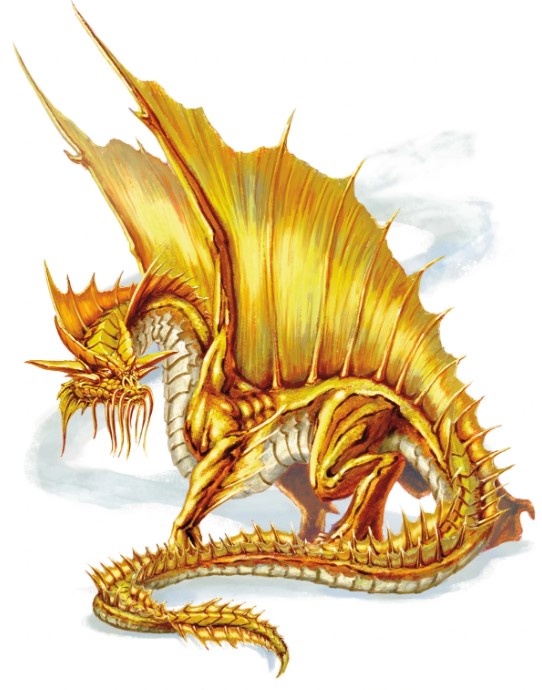
Don't mess with Grandpa
Dragons are pretty much a requirement for Dungeons & Dragons. Plus, they look awesome! And terrifying! Honestly, a dragon attack can ruin a player’s day.
What makes them dangerous?
- Amphibious – several ancient dragons can breathe both air and water; jumping in a lake isn’t a guarantee of safety
- Legendary Resistance – if an ancient dragon fails on a saving throw, they can choose to succeed anyway up to 3 times
- Lair attacks – not only will the dragon attack, but its home will attack, too
- Multi-attacks – can attack with its frightening presence, bite, and claws
Legendary Actions
Change Shape – some ancient dragons can polymorph into a humanoid shape. These dragons can track down a player in public without generating suspicion or chaos.
Stats
- Natural AC of 22
- Has 297 - 546 HP
- Challenge level: 20 – 24
- Gargantuan Dragon
- Weaknesses
- No overt weaknesses
3. Kraken
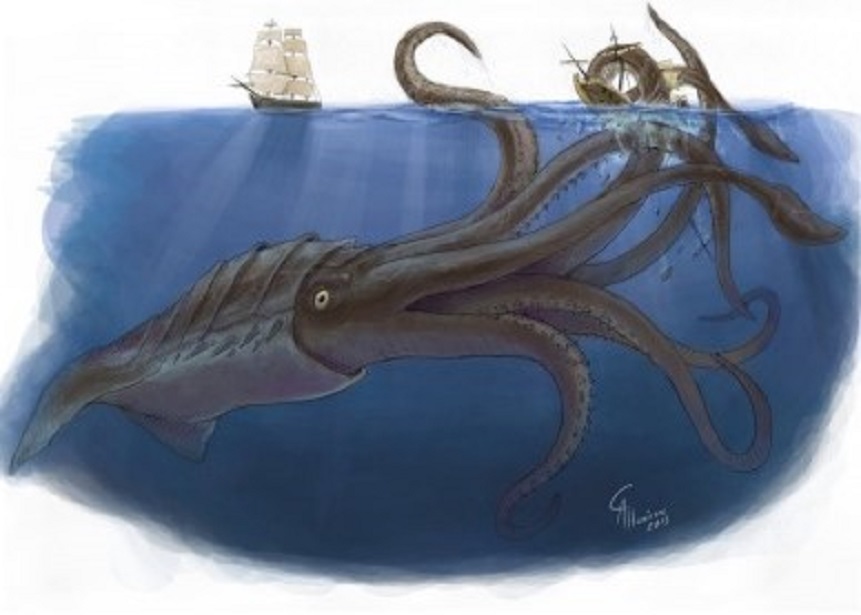
A kraken isn’t the absolute most powerful monster in D&D, but it’s very close.
A kraken is basically a gigantic squid. It lives underwater but can breathe air just fine. It also ignores rough terrain and moves just as fast as it would over anything else. Magic cannot slow it down, and it can choose to forfeit some of its speed to get out of non-magical restraints.
If it gets tired of fighting a player, it can just swallow them.
What makes them dangerous?
- Immunity – immune to several kinds of physical attack and can’t be frightened or paralyzed
- Smart – understands multiple languages and has truesight up to 120 ft and good passive perception. It would be difficult to outwit a kraken.
- Multiattack – can make attacks with 3 tentacles at once
- Legendary Actions
Stats
- Natural AC of 18
- Has 472 HP
- Challenge level: 23
- Gargantuan Monstrosity
- Weaknesses
- Krakens don’t understand Common
- Other than that, Krakens don’t have any weaknesses
2. Tarrasque
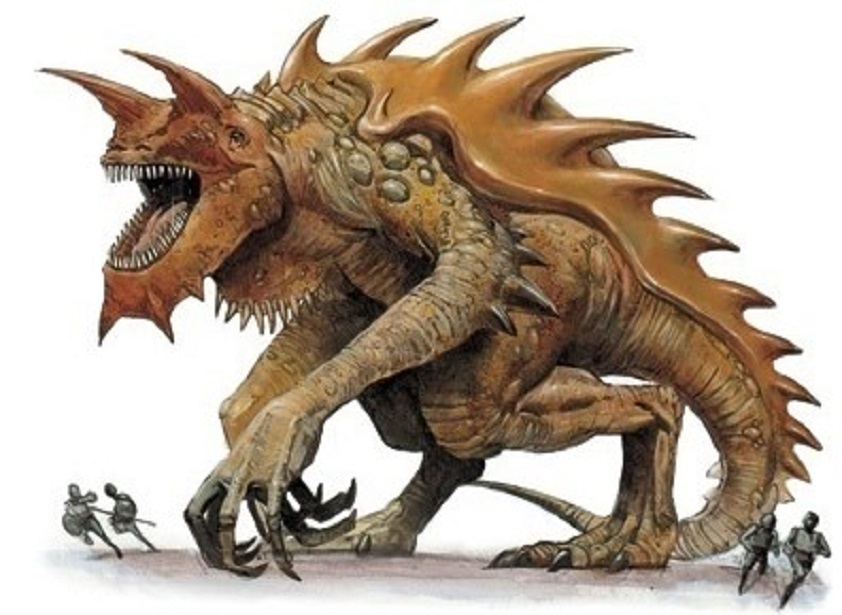
That's one big beetle.
Fighting a Tarrasque is one of the most challenging battles a D&D player can face. A tarrasque is a tyrannosaurus-like monster with huge spikes on its back. It has so much HP and legendary resistance! That's a final boss if I've ever heard of one.
Overall, a tarrasque can kill an entire party in two moves.
What makes them dangerous?
- Legendary resistance – if a tarrasque fails a saving throw, it can choose to succeed anyway 3 times
- Speed – It can move 40 ft. per action (and can dash 80 ft.)
- Magical Resistance – advantage on saving throws for all magic, and some magic doesn’t affect them at all and reflects back at the caster
- Immunity – immune to nearly everything, including: piercing, bludgeoning, poison, paralysis, and slashing. They can also see up to 120 ft when blinded
- Multiattack – can attack with tail, claws, teeth, and horns all at once, and they literally scare players senseless while they do it
- Legendary actions
Stats
- Natural AC of 25
- Has 676 HP
- Challenge level: 30
- Gargantuan Monstrosity
- Weaknesses
- It’s an animal; it’s a huge, terrifying animal that exists to destroy and kill, but an animal, nonetheless. It doesn't have an intelligence or wisdom bonus, so it can be outsmarted.
- It's weaker on the inside - To do real damage, a player must let themselves be swallowed. The player will be blinded and restrained once swallowed and get disadvantage on their rolls, but more damage can be dealt from inside the tarrasque than from outside.
1. Dungeon Master

I shall make you fail everything.
While this may not (technically) be a monster, the DM is definitely the most dangerous part of D&D. As dangerous as all other monsters can be, they are all puppets controlled by the DM.
You may also be interested in:
Image Gallery
- Log in or register to post comments
 Home
Home PC Game Trailers
PC Game Trailers News
News Menu
Menu
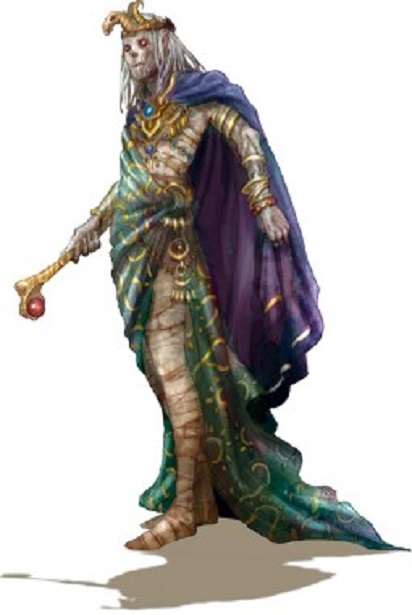
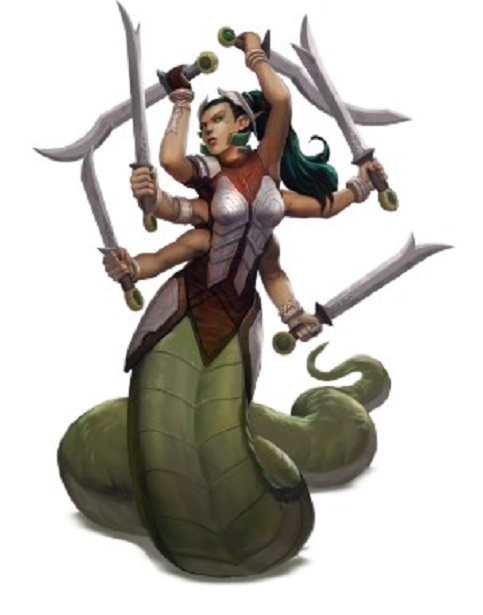
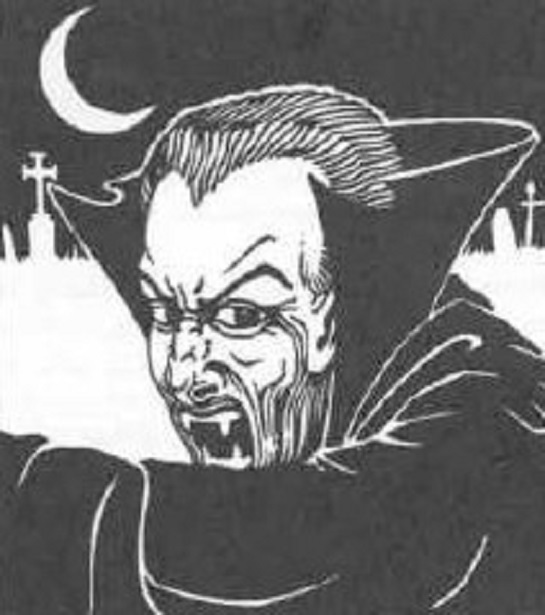
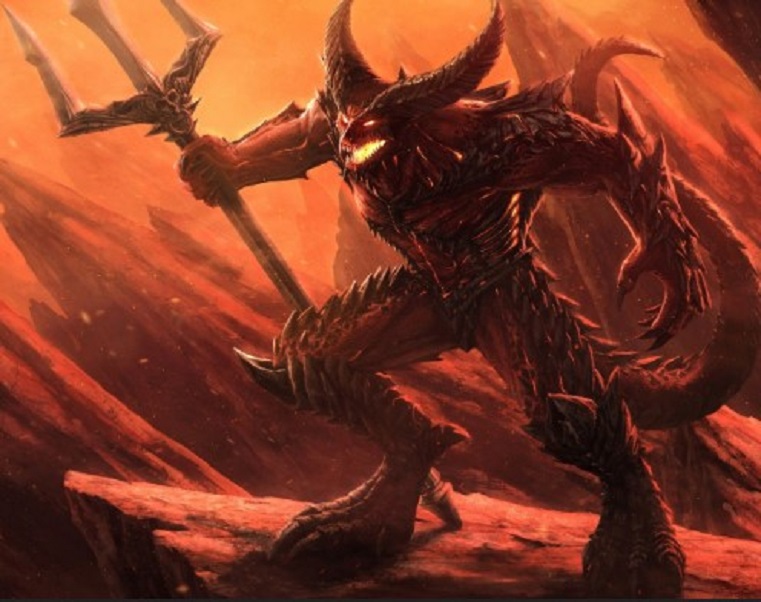
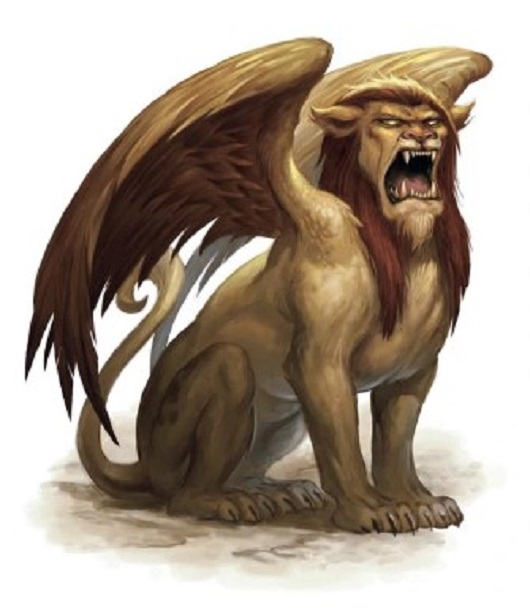
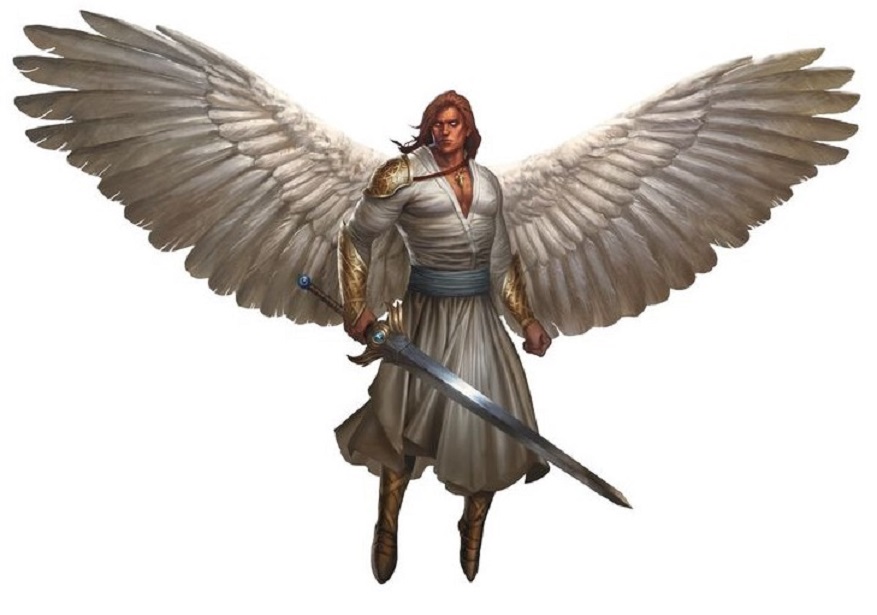

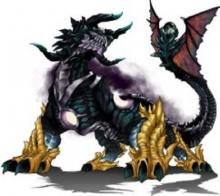
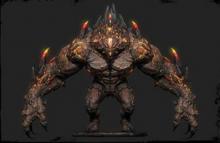
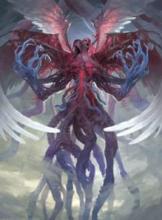
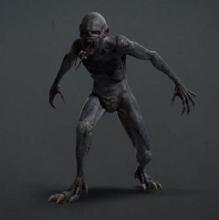
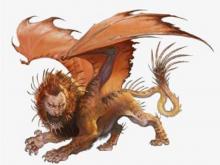
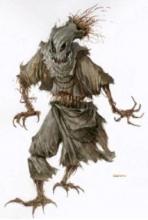
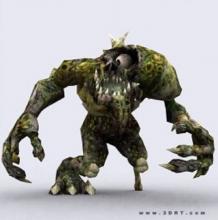
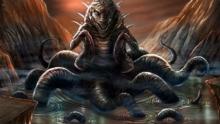
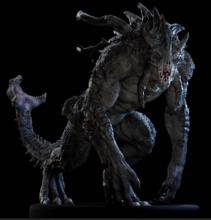
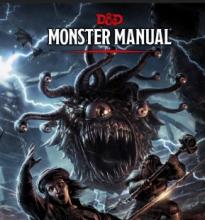

![Top 15 D&D Best Cursed Items [Funny Cursed Items] dnd cursed item, cursed item, dnd cursed items, cursed items, funny cursed items, funny cursed items dnd, best cursed item, best cursed item dnd, best cursed items dnd, funniest cursed items, funniest cursed item dnd, dnd curse, curse, dnd curses](https://www.gamersdecide.com/sites/default/files/styles/308x185-scale-crop--more-top-stories/public/cursed_item.jpg)
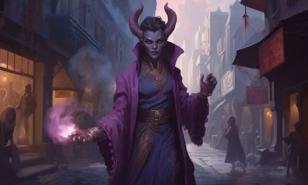
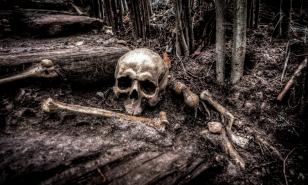
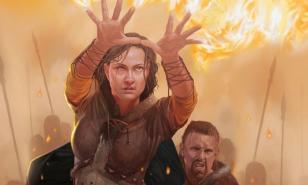
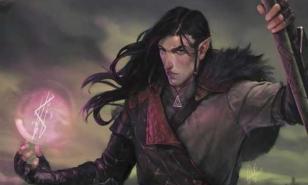
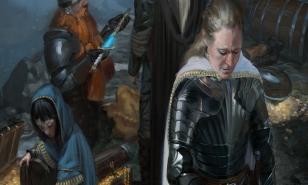
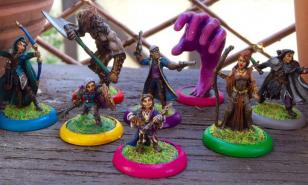
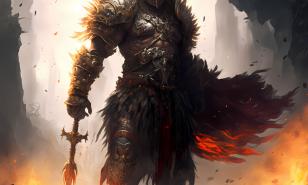

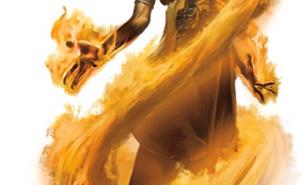
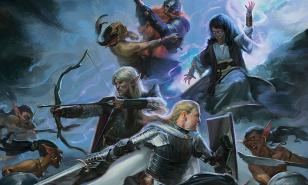
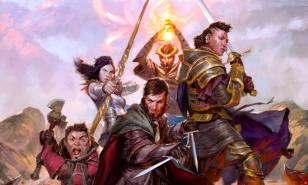
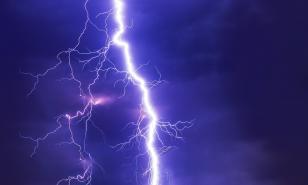
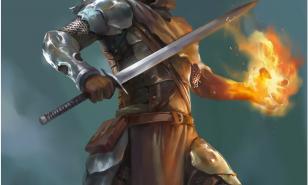
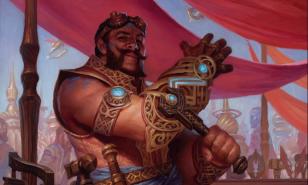
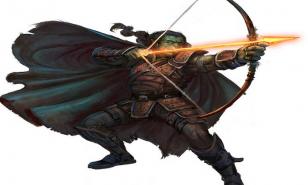
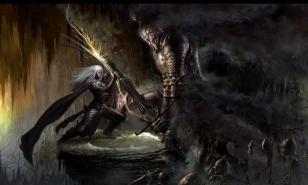
![[Top 5] D&D Best Rogue Multiclass Builds That Are Powerful D&D Best Rogue Builds](https://www.gamersdecide.com/sites/default/files/styles/308x185-scale-crop--more-top-stories/public/top_5_dd_rogue_multiclass_builds_that_are_powerful_rogue_1.jpg)

